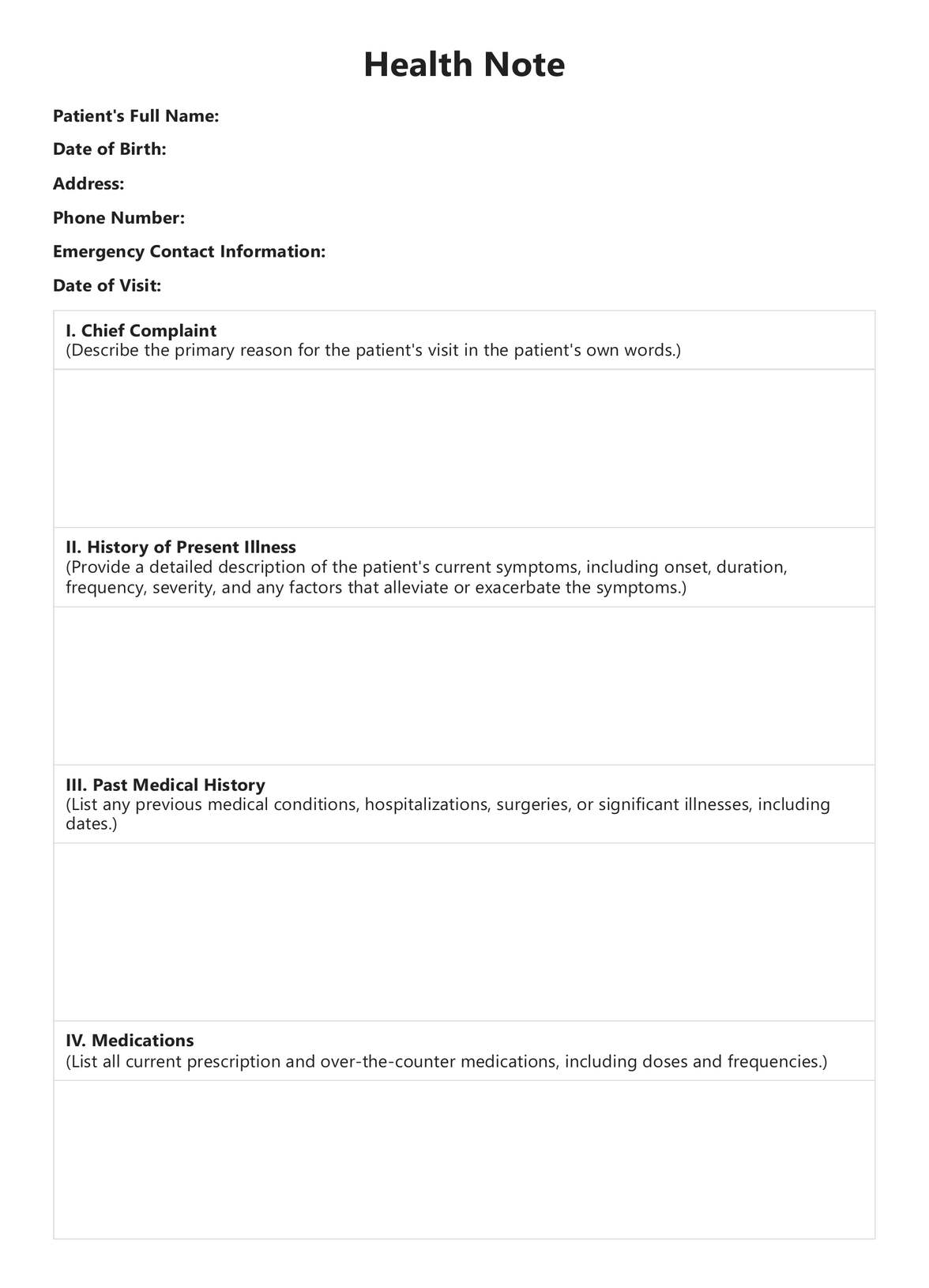Health Notes are used by various healthcare practitioners, including physicians, nurses, physician assistants, therapists, and other allied health professionals.

Health Note
Learn about Health Notes and their importance in patient care and access a free PDF template to streamline your documentation process.
Health Note Template
Commonly asked questions
Health Notes are used during initial patient consultations, routine check-ups, follow-up appointments, management of chronic conditions, documentation of hospitalizations or emergency care, and when coordinating care among multiple healthcare providers.
Health Notes can be stored electronically using a secure electronic health record (EHR) system or a personal health record (PHR) platform. Alternatively, they can be stored as physical copies in well-organized filing systems. It's essential to ensure that Health Notes are stored securely to protect patient privacy and comply with healthcare regulations, such as HIPAA, in the United States.
EHR and practice management software
Get started for free
*No credit card required
Free
$0/usd
Unlimited clients
Telehealth
1GB of storage
Client portal text
Automated billing and online payments











